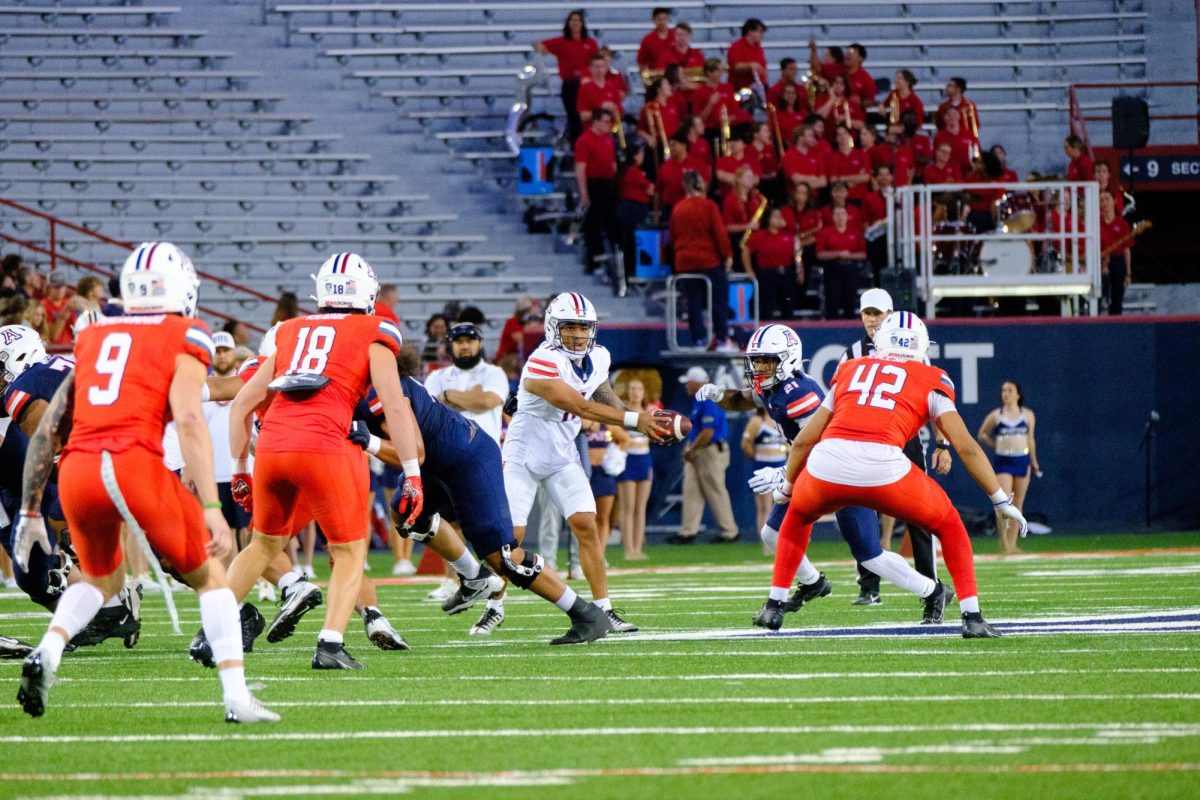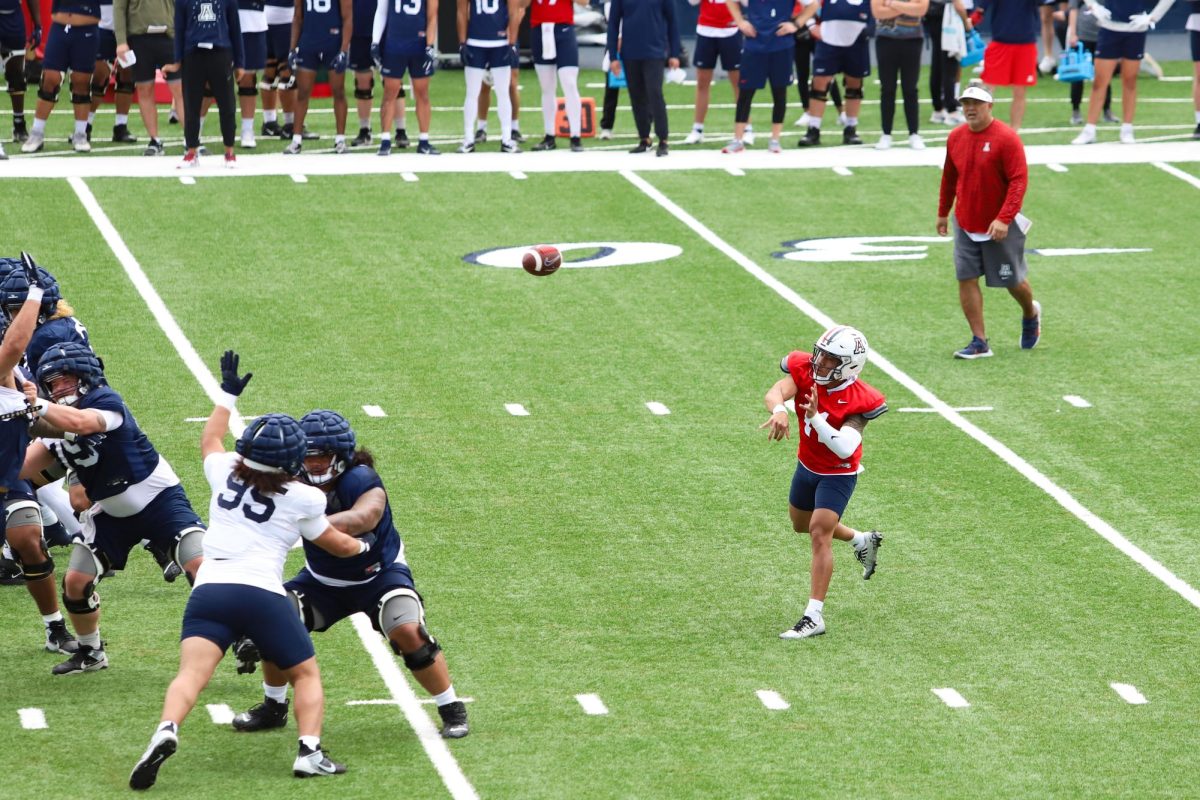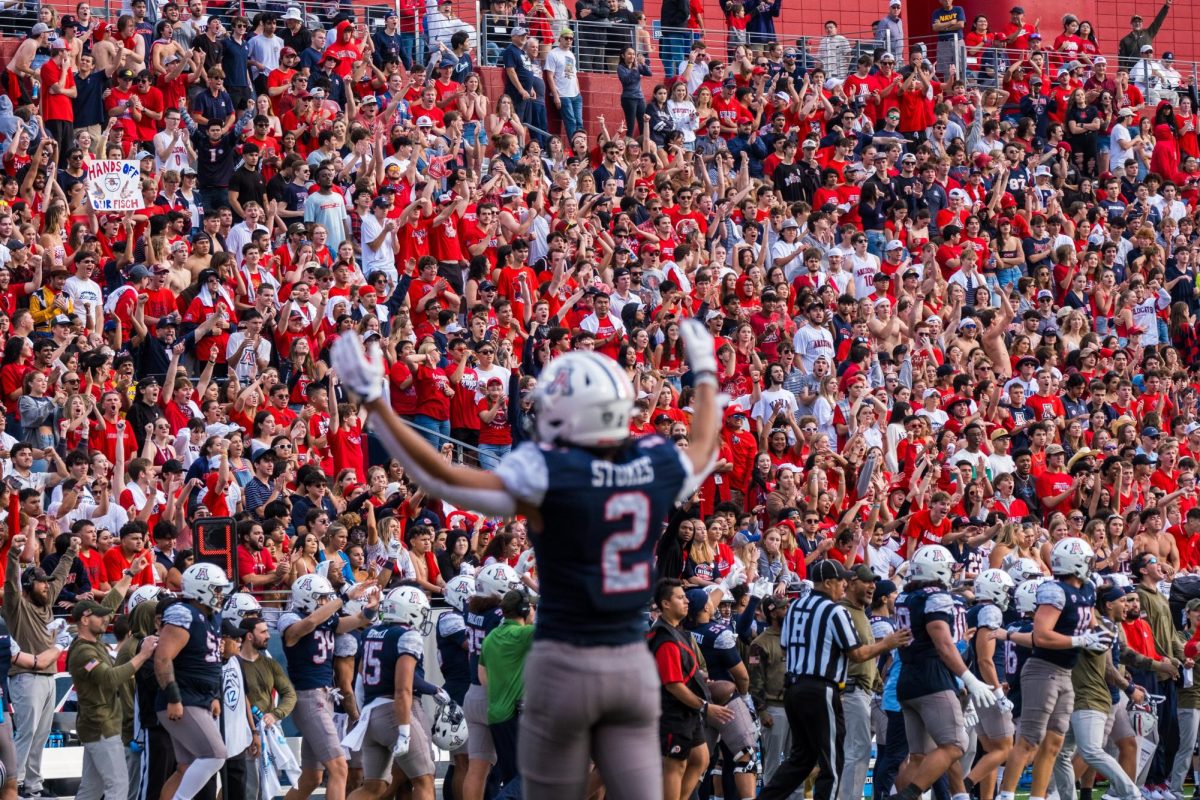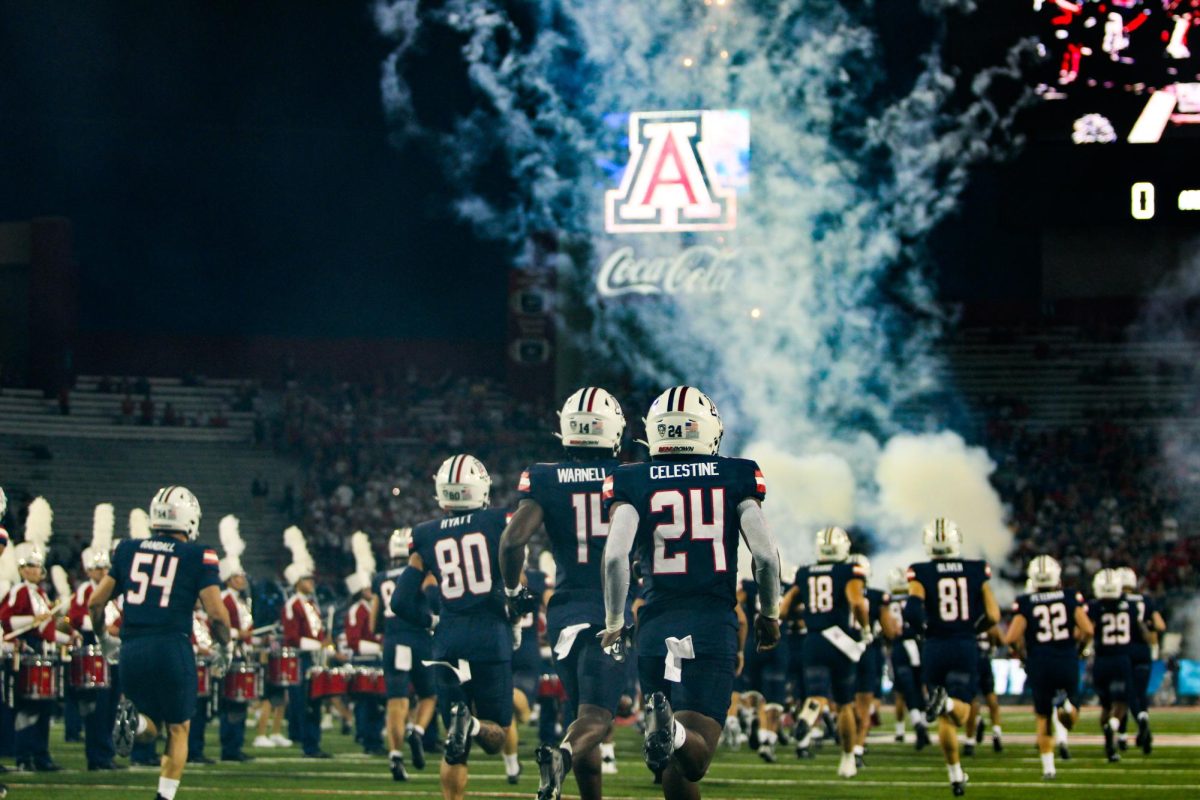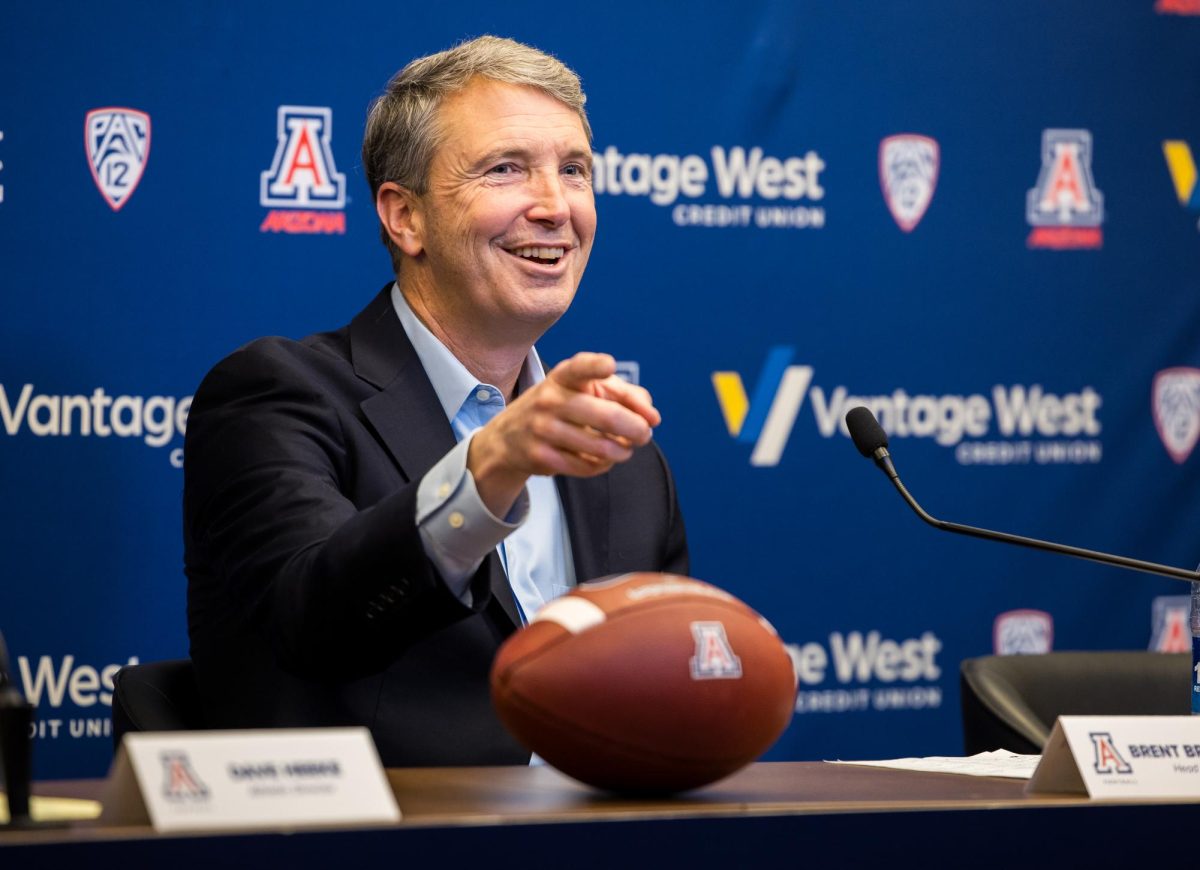UNIVERSAL CITY, Calif. – Arizona football has experienced countless changes this offseason with the addition of a new coach and new offensive and defensive systems, but the most noticeable change Wildcats fans will witness as training camp starts is the speed with which the team plays.
It hasn’t been an easy transition. Upon being hired, head coach Rich Rodriguez, whose spread option offense highlights players’ speed and athleticism, noticed that not one member of last year’s 4-8 team was in the physical shape he would need them to be come September 1.
“They’re not out there trying to run the Boston Marathon, but at the same time, if there’s 170 or 180 plays in a game, I want our guys to be able to play fast on every snap,” Rodriguez said. “Conditioning is such a huge factor. You may think you’re playing full speed, but you can’t play full speed if you’re not in shape.”
The stereotype surrounding Rodriguez is that he focuses primarily on the offensive side of the ball, but the purpose of speeding things up in practice is to get the defense, which has only one starter over 280 pounds and none over 300, to play with speed and a purpose.
“Every practice felt like we were playing Oregon,” junior linebacker Jake Fischer said. You have to be able to think on your feet and be quick with your judgment.”
Now that fall camp is a little over a week away, the focus is again going to be placed on the Wildcats’ conditioning – at least from the outset.
“I’ll test them when we start practicing and that will give me an indication of where we’re at,” Rodriguez said. “The guys that worked out in the summer and trained won’t have any problems.”
“The guys that didn’t, well,” Rodriguez said with a shrug.
Rodriguez’s scheme has produced two of the more mobile quarterbacks in recent memory in former West Virginia star Pat White and Michigan’s Denard Robinson. Rodriguez inherited dual-threat quarterback Matt Scott from the Mike Stoops coaching staff, “the best decision the last coaching staff made”.
Scott, who redshirted last season because he Nick Foles, Arizona’s starter for the last two seasons are the same year in school, said that the new scheme fits his talents as a runner and passer, but the increased attention in conditioning is something he and the rest of the team needed.
“My endurance has gotten a lot better,” Scott said. “When I came here, I probably couldn’t have run 60 yards without getting caught from behind. I’ll have no problem taking it the distance now.”
Part of the problem when Rodriguez took over in December was that players were down on the season because they were not headed to a bowl game for the first time in three seasons, which led to a lack of commitment in their conditioning and training.
“Conditioning had to be increased and the players had to make a commitment,” Rodriguez said. “ They probably didn’t train like an elite athlete is supposed to train over November and December. Elite athletes, which I consider Division I football players to be, never take more than two weeks off if you want to excel at the highest level.”



